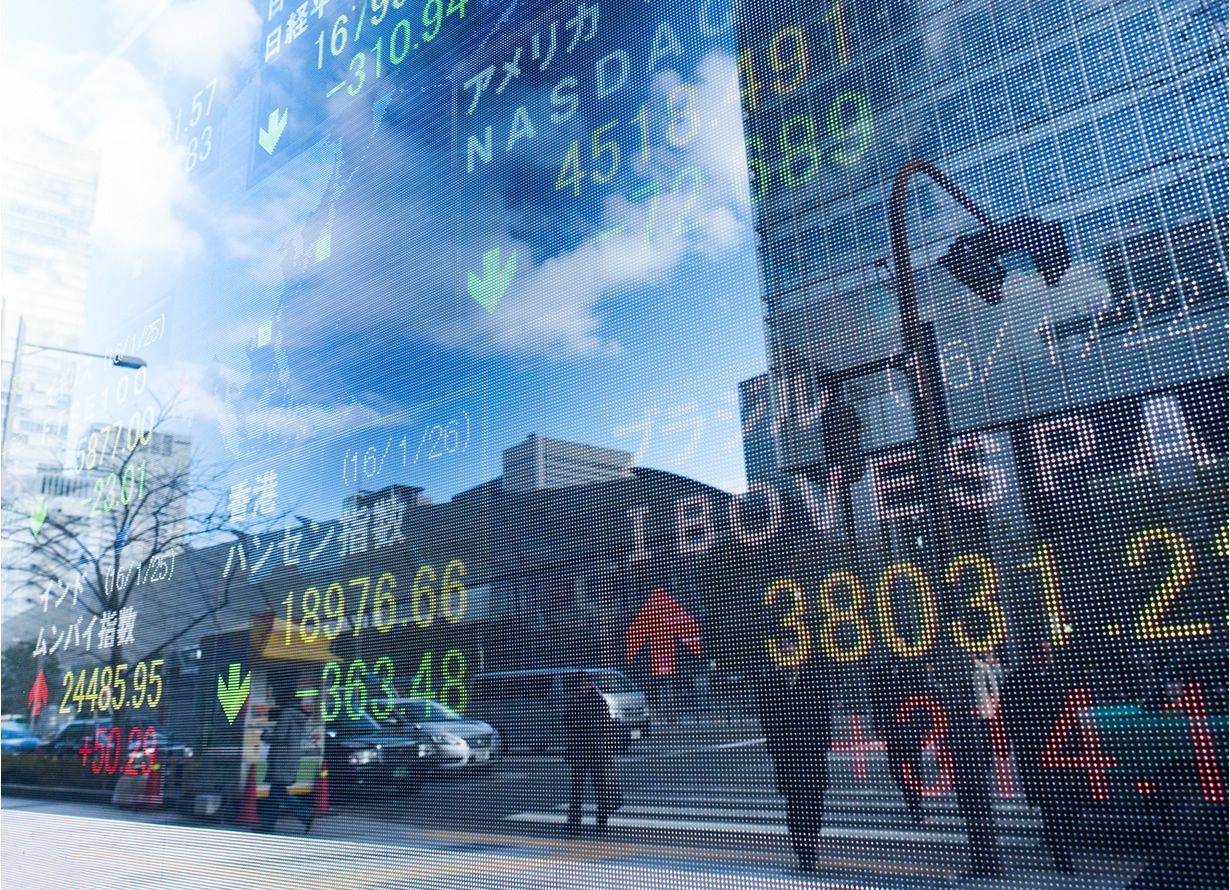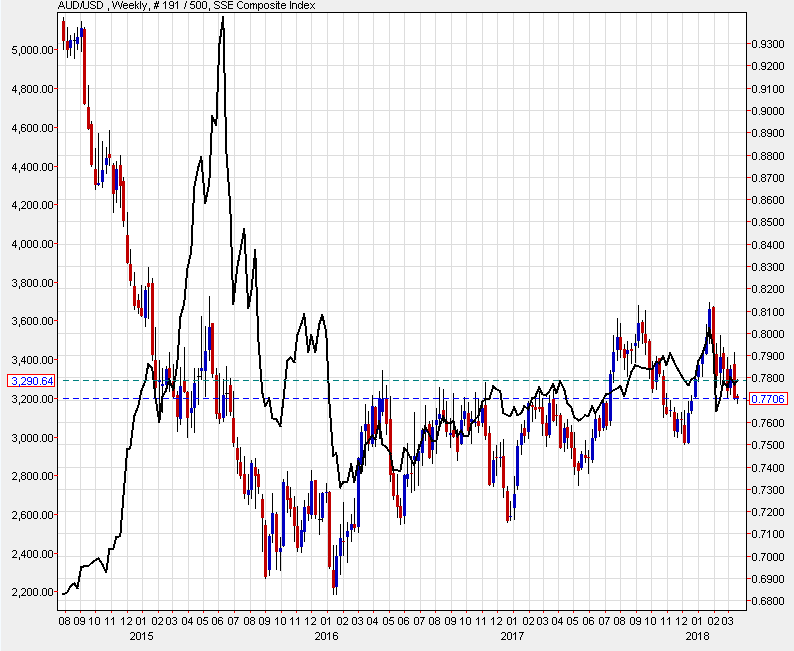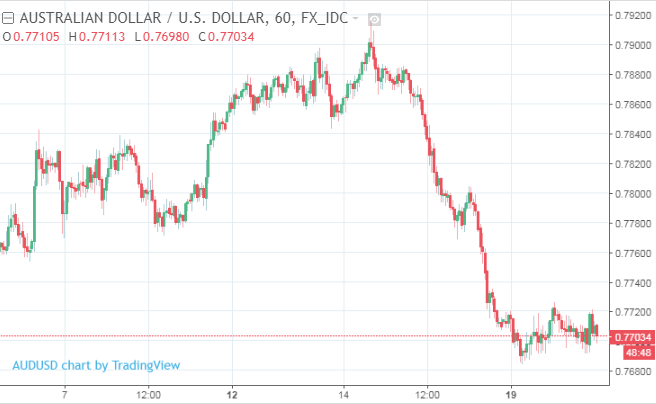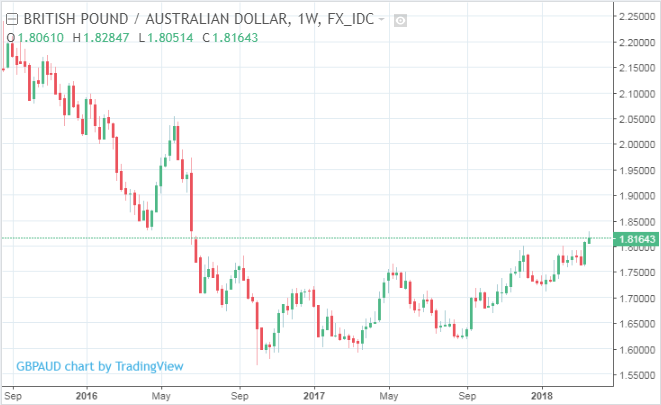Australian Dollar in Focus as Strategists Eye Potential for “Sharp Moves” in Months Ahead
- Written by: James Skinner
-AUD/USD has tracked the Shanghai Composite closely for two years now.
-Risks to Chinese stocks, and the Aussie, are rising with trade tensions.
-Any slump in AUD/USD likely positive for Pound-to-Aussie.

© moonrise, Adobe Stock
The Australian Dollar held its own against the G10 basket during morning trading in London Tuesday, despite a continuing rout in iron ore futures markets and a choir of strategists who are taking an ever more cautious stance on the currency.
Australia’s unit notched up gains over all of its developed world rivals, except the Canadian Dollar, marking an extension of Monday’s rebound and drawing a line under last week’s heavy losses.
Tuesday’s price action comes as the March loss for iron ore futures prices crossed the -13% threshold and minutes from the Reserve Bank of Australia’s latest meeting yielded no signs of an imminent change in monetary policy.
"It’s interesting to note that the post-January 2016 recovery in the AUD coincided with the start of a recovery in the Shanghai Composite and that both seem to have tracked each other reasonably closely since then," says Simon Derrick, chief currency strategist at BNY Mellon.
"The risk would therefore seem to be that deteriorating sentiment towards China and Chinese markets could leave the AUD looking particularly exposed given the lack of yield support."

Above: AUD/USD (Red & Blue) with Shanghai Composite (Black) overlay. Source: Netdania.
Wih China aside, Derrick strikes right at the heart of the analyst community's current concerns about the Australian Dollar, which are centred on divergence between interest rates down under and those elsewhere in the developed world.
After all, the Reserve Bank has held its cash rate at a record low of 1.5% for close to two years now while the Federal Reserve has continued to push its own interest rate higher, so that the top end of the Fed Funds range now sits at 1.75%. Other central banks, including the Bank of Canada and Bank of England, are also marching North too.
"It’s worth highlighting that the 2-year, 5-year and 10-year yield gaps are now at such extremes that US yields actually stand above their Australian equivalents, a situation not seen since 2000 when the AUD was trading closer to USD 0.5000," Derrick adds.
Despite divergence in monetary policies, the Australian Dollar has held up relatively well in recent quarters. It is down by just 0.33% against the US Dollar in the last 12 months but up by around 14% against the greenback since its nadir in January 2016.

Above: AUD/USD exchange rate shown at hourly intervals.
Moreover, although the Aussie has fallen 12% against the Pound in the last year, it remains nearly 10% higher than it was on the day of the Brexit referendum in June 2016.

Above: Pound-to-Australian-Dollar rate shown at weekly intervals.
However, the danger for the Aussie is that if market sentiment suddenly shifts, it could become vulnerable to a sharp adjustment lower relative to the greenback. In an environment where Brexit tensions are easing, this would likely prove positive for the Pound-to-Aussie rate.
Derrick describes markets as complacent about risks posed to the Aussie Dollar by any sudden shift in sentiment toward the Chinese economy.
"This lack of apparent concern is interesting when it’s remembered that the AUD (much like GBP) has shown a marked propensity over the past 18 years for rapid and sustained moves," the strategist writes, in a note Tuesday.
Derrick flags that the Australian Dollar has seen annual swings of 20% or more on no less than 10 occasions since the year 2000, emphasising the currency has past form for wild moves.
"For the moment the two year-plus uptrend remains intact. However, should it break then the risk is that a particularly sharp move develops," he warns.
Advertisement
Get up to 5% more foreign exchange by using a specialist provider to get closer to the real market rate and avoid the gaping spreads charged by your bank when providing currency. Learn more here.
Trade Spat a Possible Catalyst for an AUD Sell-off
Derrick's warnings come just days after a series of technical analysts flagged a looming slump in the AUD/USD exchange rate.
On this note, and considering the sensitivity of the Australian Dollar to changes in the Chinese stock market, the coming weeks may prove pivotal to the currency.
"Worries on the trade war theme continue to simmer along as we possibly await China-directed US tariffs in the coming week or so," warns John Hardy, head of FX strategy at Saxo Bank.
President Donald Trump is reported to be mulling another round of trade tariffs, this tim aimed directly at Chinese goods from the telecommunications, technology and intellectual property industries.
The threat of further tariffs feeds directly into lingering fears of a global trade war, which were ratcheted up earlier this month when the White House announced that it will impose new levies of 10% and 25% respectively on imports of aluminium and steel into America.
Other nations and supranational blocks, including China and the European Union, have threatened retaliation against the steel tariffs, which are due to come into effect on March 23.
National leaders have also attempted to talk the White House out of further so called protectionist measures. However, if they are unsuccesful in these efforts, sentiment toward the likes of China and Australia could deteriorate given economists expect any tariff fight will hamper global economic growth.
"The Chinese renminbi remains (ominously) range-bound as we only have a negative drumbeat of rumoured moves from the US administration on new protectionist measures aimed at China without actual new developments, save for some drama in US President Trump’s reshuffling of his cabinet, one that would seem to raise the odds that a more hawkish stance on trade is on its way," Hardy adds.
Fears of an escalation in trade related tensions come one week after President Trump fired Secretary of State Rex Tillerson and replaced him with former Central Intelligence Agency director Mike Pompeo.
Pompeo is seen as more hawkish on national security and diplomacy than his predecessor, which could have an impact on US relations with China as well as Iran, although the hawkish appointment has been somewhat countered by the President's pick for National Economic Council director.
President Trump appointed Larry Kudlow to head the NEC after former Goldman Sachs chief Gary Cohn resigned earlier in March out of opposition to the White House's protectionist agenda.
Advertisement
Get up to 5% more foreign exchange by using a specialist provider to get closer to the real market rate and avoid the gaping spreads charged by your bank when providing currency. Learn more here.




